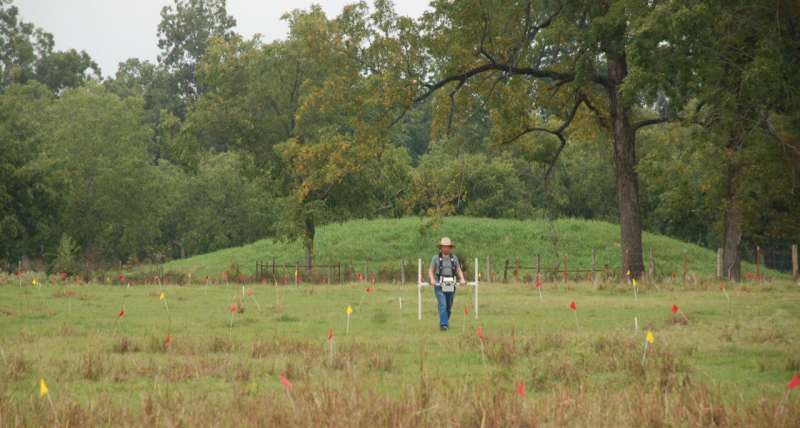This article has been reviewed according to Science X's editorial process and policies. Editors have highlighted the following attributes while ensuring the content's credibility:
fact-checked
trusted source
proofread
Remains at Crenshaw site are local, ancestors of Caddo, study finds

Hundreds of human skulls and mandibles recovered from the Crenshaw site in southwest Arkansas are the remains of ancestors of the Caddo Nation and not foreign enemies, according to a new study published in the Journal of Archaeological Science.
Collaborating with the Caddo Nation in Oklahoma, researchers at the University of Arkansas and Arkansas Archeological Survey tested lead and strontium isotopes in the teeth of human remains and compared them to ancient animal teeth from several surrounding regions to determine that the 700-year-old human remains were local people.
"Our study tested and ultimately refutes hypotheses that the Crenshaw remains are 'trophy skulls' killed during raiding expeditions," said lead author John Samuelsen. "Demonstrating that the remains are Caddo ancestors provides both researchers and the Caddo Nation a clear answer to questions that have long persisted about the site and the remains."
Samuelsen serves as science and technology administrator at the Arkansas Archeological Survey and a graduate faculty member in the Department of Anthropology at the U of A. He specializes in geochemical analysis of remains and archeological materials to detect geographical movement of ancient people and animals.
For the Crenshaw study, he worked with Adriana Potra, associate professor in the Department of Geosciences at the U of A. Potra, who studies ore geology and radiogenic isotope geochemistry to enhance an understanding of the geochemistry and tectonic framework of ore deposits, helped improve scientific methods using the lead isotopes.
Their study of the Crenshaw site is the first to use lead isotopes in ancient animal teeth from many different regions to evaluate where humans lived. These isotopes in tooth enamel are set during childhood tooth formation and reflect the isotopes in the underlying geology where the children grew up.
More information: John R. Samuelsen et al, Multiregional Pb isotopic linear patterns and diagenesis: Isotopes from ancient animal enamel show Native American "foreign war trophies" are local ancestors, Journal of Archaeological Science (2023). DOI: 10.1016/j.jas.2023.105804
Provided by University of Arkansas





















